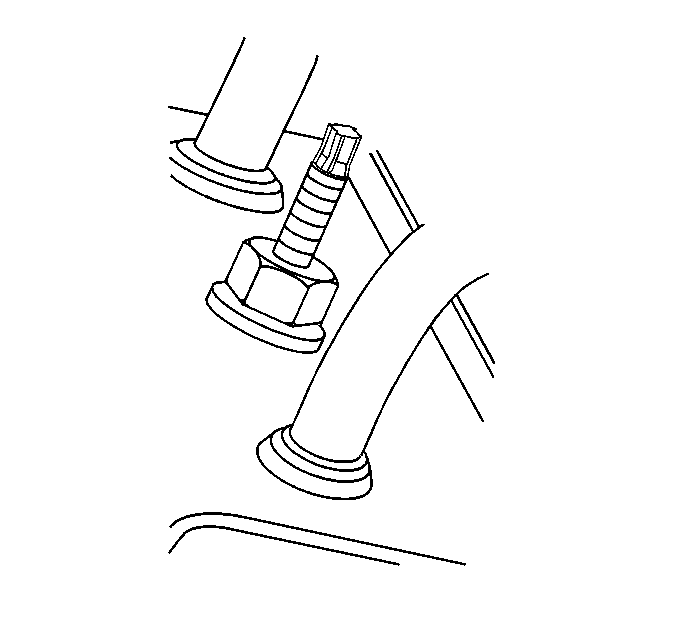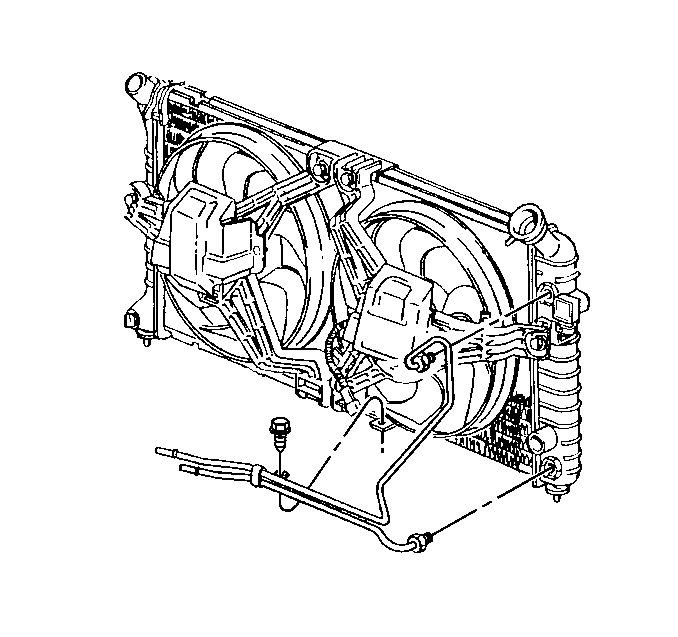Use only double-wrapped and use only brazed steel pipe meeting the GM specification 123M or equivalent if replacement of the transaxle oil cooler pipes are required. Ensure the pipe is double-flared.
Removal Procedure
- Raise and support the vehicle.
- Position the drain pan.
- Remove the transaxle oil cooler pipe at the transmission.
- Remove the transaxle oil cooler pipe fittings at the radiator.
- Remove the transaxle oil cooler pipe clip bolt.
- Remove the transaxle oil cooler pipes.
Caution: Refer to Vehicle Lifting Caution in the Preface section.
Notice: Allow sufficient clearance around the transaxle oil cooler pipes and around the hoses to prevent damage or wear which may cause fluid loss.


Installation Procedure
- Install the transaxle oil cooler pipes.
- Install the transaxle oil cooler pipe clip bolt.
- Install the transaxle oil cooler pipe fittings at the radiator.
- Install the transaxle oil cooler hoses to the pipes.
- Lower the vehicle.
- Adjust the transmission fluid level. Refer to Transmission Fluid Check .
- Inspect for proper completion of the repairs.
- Inspect for fluid leaks.

Important: The correct thread engagement is critical. Crossthreaded fittings can achieve proper tightness value and still leak.
Notice: Use the correct fastener in the correct location. Replacement fasteners must be the correct part number for that application. Fasteners requiring replacement or fasteners requiring the use of thread locking compound or sealant are identified in the service procedure. Do not use paints, lubricants, or corrosion inhibitors on fasteners or fastener joint surfaces unless specified. These coatings affect fastener torque and joint clamping force and may damage the fastener. Use the correct tightening sequence and specifications when installing fasteners in order to avoid damage to parts and systems.
Tighten
Tighten the transaxle oil cooler pipe clip bolt to 4 N·m
(27 lb in).
Tighten
Tighten the transaxle oil cooler pipe fittings to 45 N·m
(33 lb ft).
Notice: Do NOT overfill the transaxle. The overfilling of the transaxle causes foaming, loss of fluid, shift complaints, and possible damage to the transaxle.
